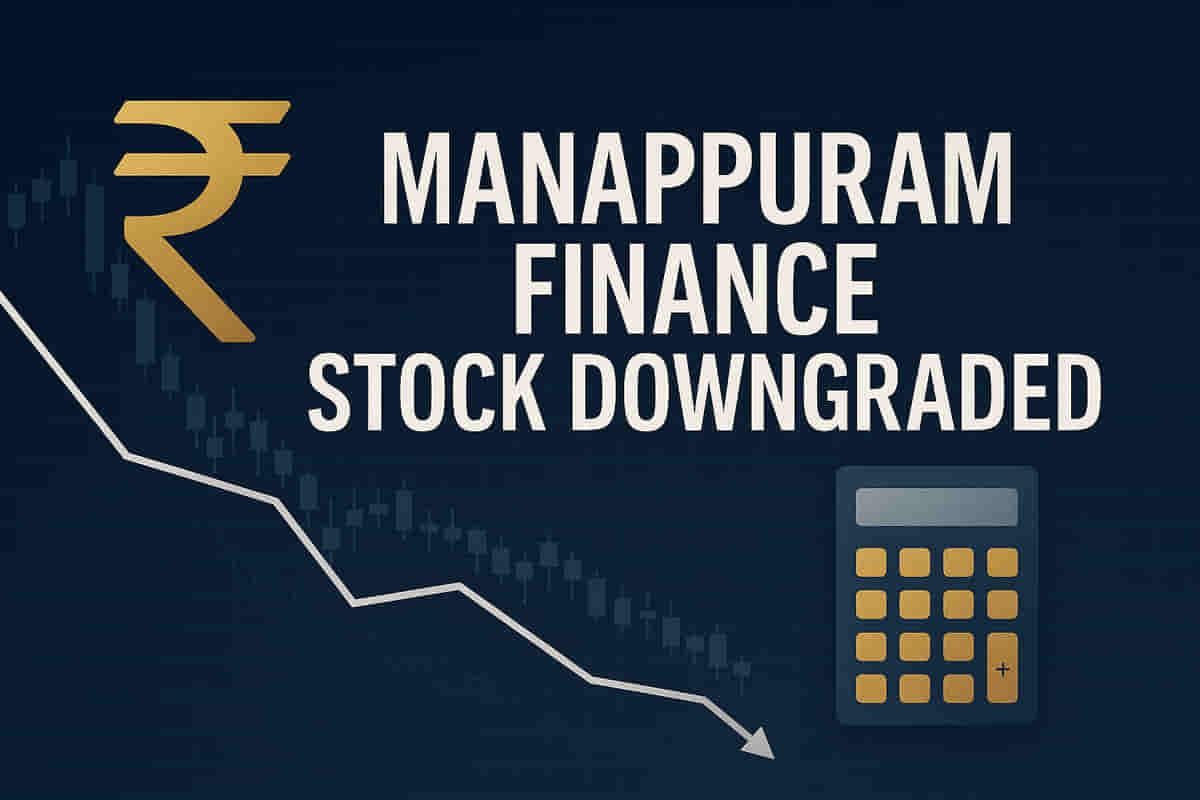CLSA Downgrades Manappuram Finance to Hold, Citing Earnings Miss and Higher Credit Costs
Banking/Finance
|
Updated on 31 Oct 2025, 03:26 am
Reviewed By
Aditi Singh | Whalesbook News Team
Short Description :

▶
Stocks Mentioned :
Detailed Coverage :
Manappuram Finance Ltd. shares are under scrutiny following a downgrade by brokerage firm CLSA, which moved the stock to "hold" from "outperform" and reduced its price target by 6.5% to ₹290 per share. This action follows the company's September quarter earnings, which showed a standalone profit after tax (PAT) missing estimates by 12%, largely attributed to increased credit costs.
CLSA highlighted that the company's key subsidiary, Asirvad MFI, reported another quarterly loss due to shrinking pre-provision operating profit (PPOP) and elevated credit costs. In the gold loan segment, Manappuram Finance continues its strategy of reducing yields to stimulate growth, benefiting from operating leverage. The gold loan book grew 9% sequentially to ₹31,500 crore, but reported yields moderated by 80 basis points to 19.7%. This growth was primarily driven by higher gold prices, while tonnage and loan-to-value (LTV) ratios remained unchanged.
Jefferies maintained a "hold" rating with a price target of ₹285 per share. They observed that while asset under management (AUM) growth was in line with expectations, net interest margins (NIMs) declined sequentially. Manappuram General Finance and Leasing Ltd. also cut gold loan yields to boost growth. Although asset quality in the MFI business is stabilizing, auto gross non-performing assets (GNPA) saw a sharp increase year-on-year. The brokerage noted that lower NIMs and the unwinding of non-gold loans are expected to dampen earnings, despite reasonable valuations. The re-rating potential for Manappuram Finance hinges on the visibility of its new CEO, Deepak Reddy, turning around the franchise, with key priorities to be outlined in the fourth quarter.
Impact This news directly impacts investor sentiment towards Manappuram Finance Ltd. A downgrade by prominent brokerages can lead to selling pressure, potentially lowering the stock price. The concerns raised about credit costs, subsidiary performance, and declining margins highlight operational challenges that could affect future profitability. The stock's performance will likely be influenced by how effectively the new CEO addresses these issues and the overall economic environment for non-banking financial companies. Impact Rating: 7/10
Terms Explained: Profit After Tax (PAT): The profit a company has left after all expenses, taxes, and interest have been paid. Pre-Provision Operating Profit (PPOP): A measure of a bank or financial institution's profitability before accounting for provisions for loan losses and taxes. Basis Points: A unit of measure used in finance to describe the percentage change in a financial instrument. One basis point is equal to 0.01% (1/100th of a percent). Asset Under Management (AUM): The total market value of all the financial assets that a financial institution manages on behalf of its clients. Net Interest Margin (NIM): The difference between the interest income generated by a financial institution and the amount of interest it pays out to its lenders (as a percentage of its interest-earning assets). Gross Non-Performing Assets (GNPA): The value of loans on which the borrower has defaulted for a specified period (usually 90 days). Loan-to-Value (LTV): The ratio of a loan amount to the appraised value of the asset being financed.
More from Banking/Finance

Banking/Finance
SEBI is forcing a nifty bank shake-up: Are PNB and BoB the new ‘must-owns’?
Latest News

Auto
Suzuki and Honda aren’t sure India is ready for small EVs. Here’s why.

Brokerage Reports
Stocks to buy: Raja Venkatraman's top picks for 4 November

Mutual Funds
Quantum Mutual Fund stages a comeback with a new CEO and revamped strategies; eyes sustainable growth

Tech
Why Pine Labs’ head believes Ebitda is a better measure of the company’s value

Industrial Goods/Services
India’s Warren Buffett just made 2 rare moves: What he’s buying (and selling)

Startups/VC
a16z pauses its famed TxO Fund for underserved founders, lays off staff
Renewables Sector

Renewables
Brookfield lines up $12 bn for green energy in Andhra as it eyes $100 bn India expansion by 2030
Energy Sector

Energy
India's green power pipeline had become clogged. A mega clean-up is on cards.
Renewables Sector

Brookfield lines up $12 bn for green energy in Andhra as it eyes $100 bn India expansion by 2030
Energy Sector
